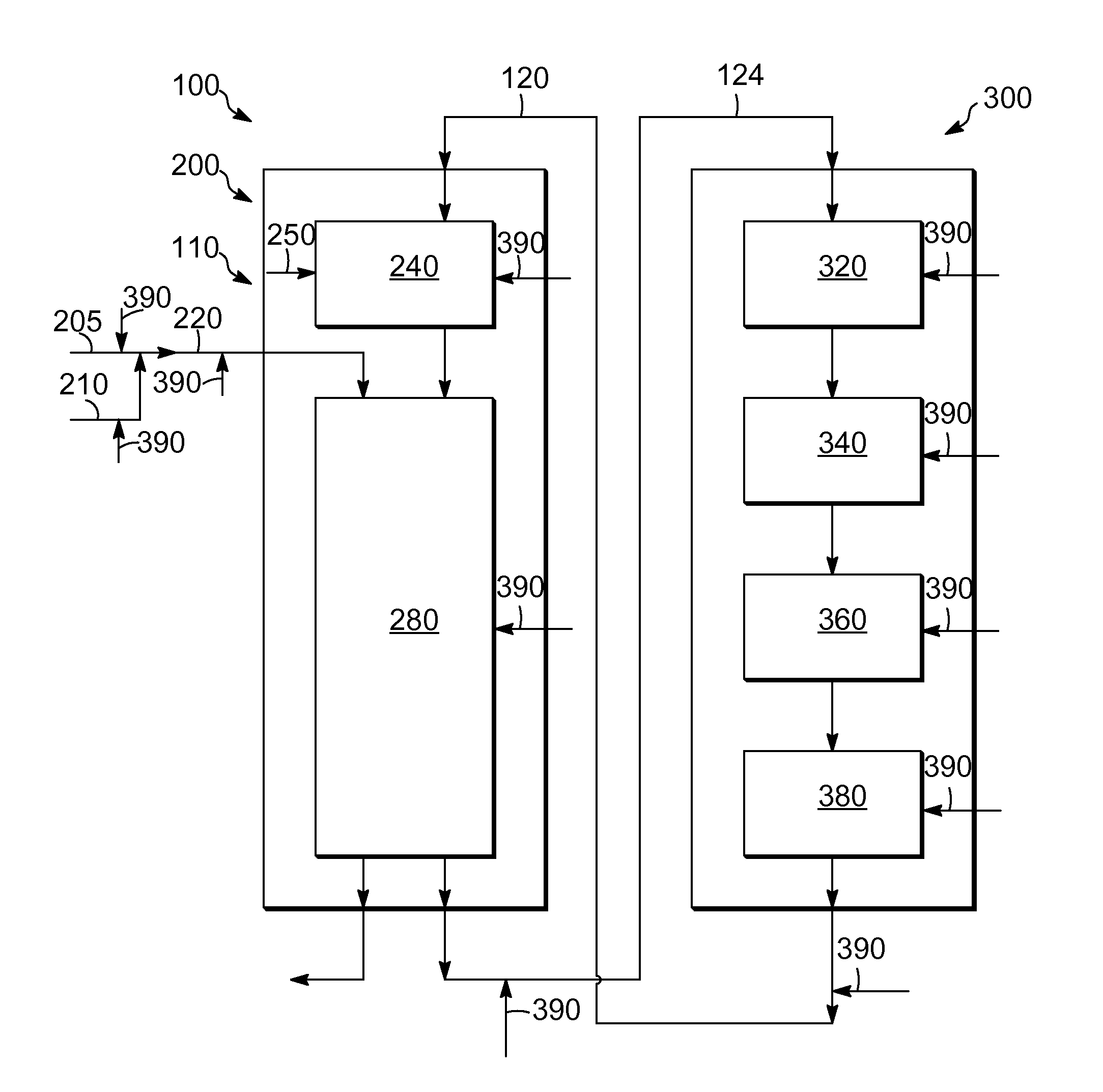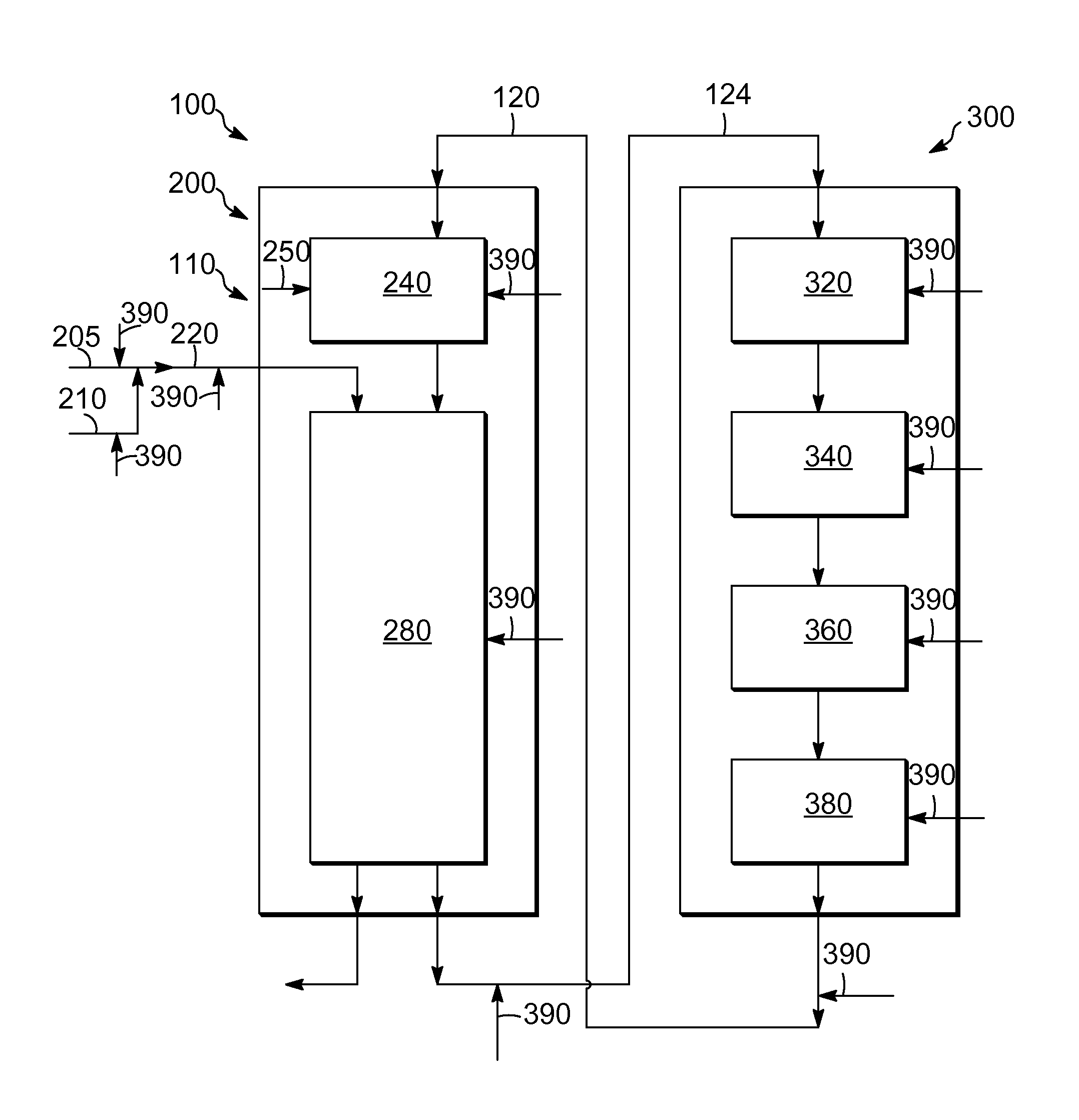Process and system for the addition of promoter metal during operation in a catalytic reforming unit
- Summary
- Abstract
- Description
- Claims
- Application Information
AI Technical Summary
Benefits of technology
Problems solved by technology
Method used
Image
Examples
example 1
[0049]To demonstrate that an alkali metal such as potassium can be deposited on a reforming catalyst under an oxidizing atmosphere during oxychlorination conditions, 200 cc of a fresh commercial continuous regeneration catalyst comprising Pt, Sn, and Cl on gamma alumina was loaded into a quartz reactor in four beds containing 50 cc each of the catalyst. A fifth bed was loaded with 200 cc of the gamma alumina support. The beds were separated by quartz wool and spacers were located above the top bed. The beds were numbered sequentially with Bed 5 located nearest to the top of the reactor, and bed 1 with the gamma alumina support located nearest to the bottom of the reactor. The initial potassium levels of the reforming catalyst and of the support were less than 0.001 wt % (less than 10 wppm).
[0050]A regeneration procedure was conducted in the reactor. The steps of the regeneration procedure included in order (1) a heat up period in air ramping the temperature from ambient to 510° C. a...
example 2
[0053]To demonstrate that an alkaline earth metal such as magnesium can be deposited on a reforming catalyst under an oxidizing atmosphere during oxychlorination conditions, 200 cc of a fresh commercial continuous regeneration catalyst comprising Pt, Sn, and Cl on gamma alumina was loaded into a quartz reactor in four beds containing 50 cc each of the catalyst. A fifth bed was loaded with 200 cc of the gamma alumina support. The beds were separated by quartz wool and spacers were located above the top bed. The beds were numbered sequentially with Bed 5 located nearest to the top of the reactor, and bed 1 with the gamma alumina support located nearest to the bottom of the reactor. The initial magnesium level of the reforming catalyst was 0.001 wt % (10 wppm) and the initial magnesium level of the support was less than 0.001 wt % (less than 10 wppm).
[0054]A regeneration procedure was conducted in the reactor. The steps of the regeneration procedure included (1) a heat up period in air...
example 3
[0058]This example demonstrates the increases in total aromatic yields without significant activity losses obtained on reforming catalysts made with low levels of alkali metals. Spherical reforming catalysts were made containing Pt, Sn, Cl and the alkali metals K or Li. The alumina base was made via the oil drop method where the Sn was incorporated into the aluminum sol. The alumina base was then impregnated with chloroplatinic acid with HCl and H2O, dried, oxychlorinated and reduced. The sample was then further oxychlorinated at 510° C., and reduced in 15 mol % H2 / N2 at 565° C. (Catalyst A) in order to be consistent with the treatments for Catalysts B and C below. The composition of Catalyst A was 0.25 wt % Pt, 0.29 wt % Sn, and 1.04 wt % Cl.
[0059]Catalyst B was made on a similar alumina base as Catalyst A. The alumina base was impregnated with a solution of potassium chloride with H2O, calcined, impregnated with chloroplatinic acid with HCl and H2O, dried, oxychlorinated at 510° C...
PUM
| Property | Measurement | Unit |
|---|---|---|
| Temperature | aaaaa | aaaaa |
| Temperature | aaaaa | aaaaa |
| Fraction | aaaaa | aaaaa |
Abstract
Description
Claims
Application Information
 Login to View More
Login to View More - R&D
- Intellectual Property
- Life Sciences
- Materials
- Tech Scout
- Unparalleled Data Quality
- Higher Quality Content
- 60% Fewer Hallucinations
Browse by: Latest US Patents, China's latest patents, Technical Efficacy Thesaurus, Application Domain, Technology Topic, Popular Technical Reports.
© 2025 PatSnap. All rights reserved.Legal|Privacy policy|Modern Slavery Act Transparency Statement|Sitemap|About US| Contact US: help@patsnap.com


